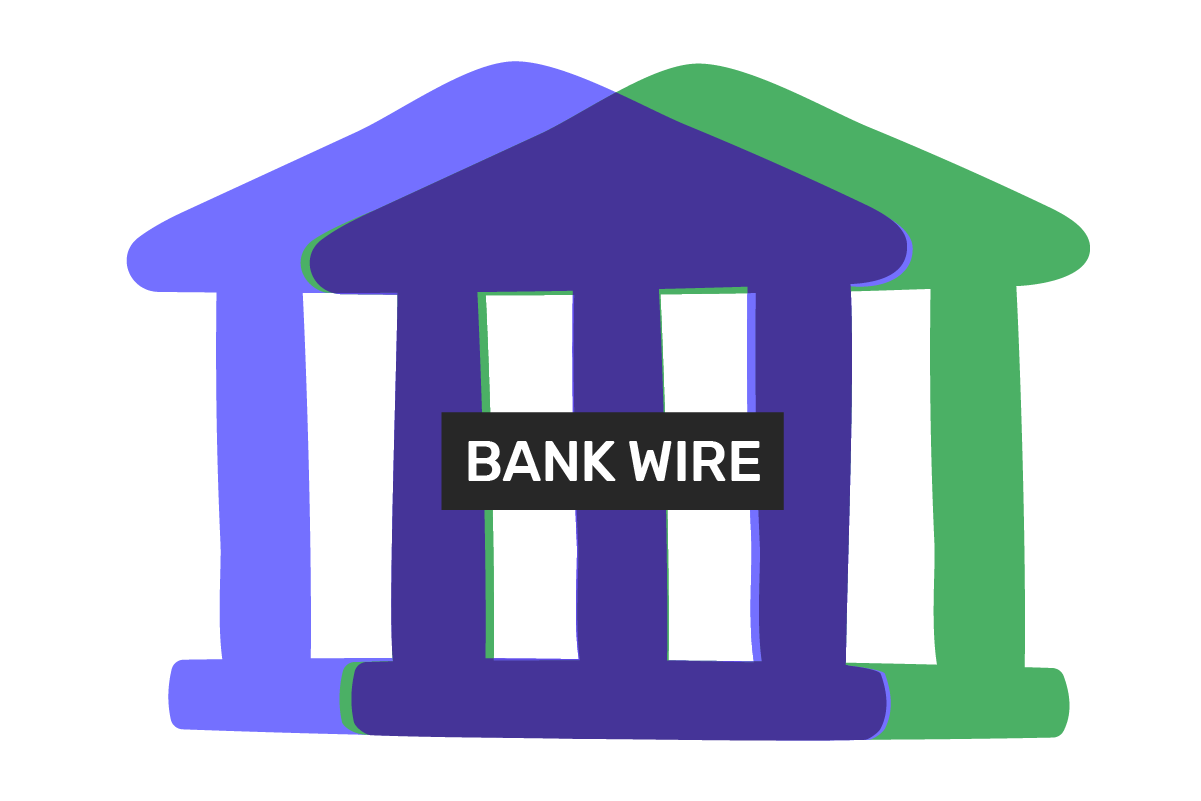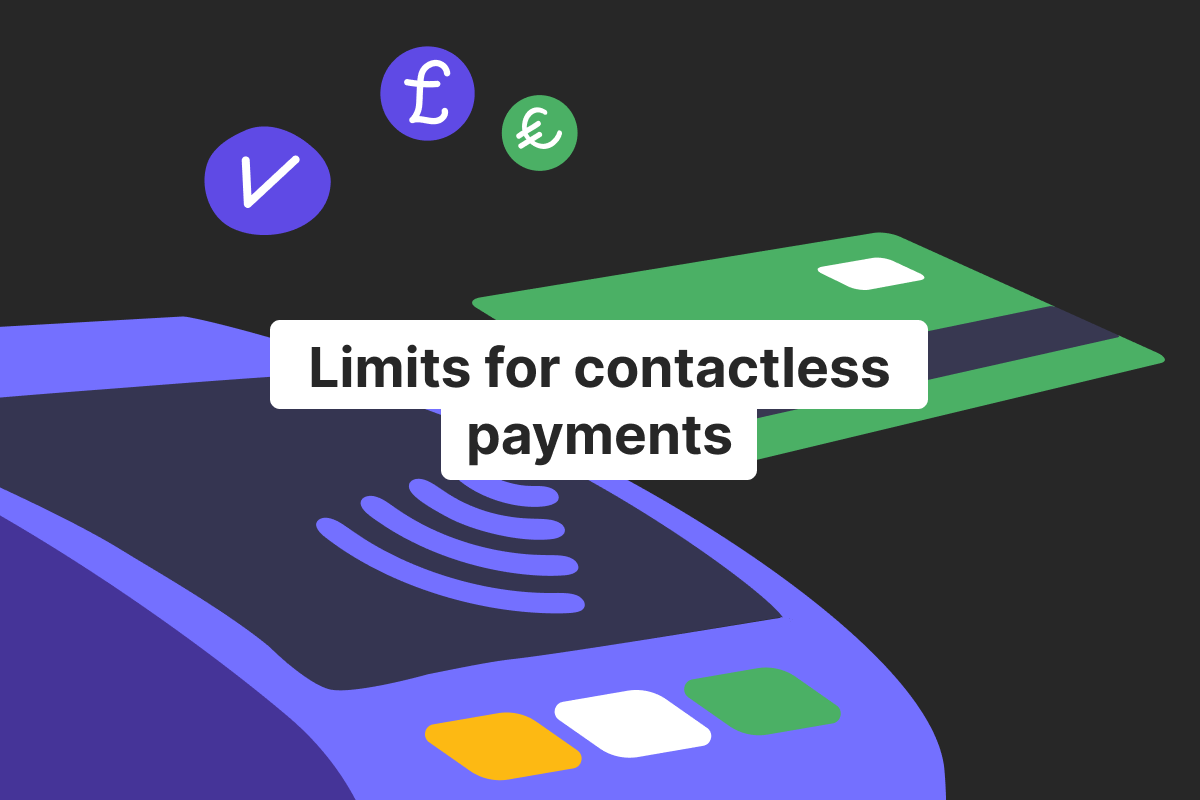Bank wire transfers are the first known way to send money electronically and dates back to the 19th century. You may ask: how could people send anything electronically at that time? The answer is simple: telegraph wires. These were the first means of electronic communication, and the telegraph served as a smooth and straightforward system for exchanging information over long distances.
In today’s blog post we are talking all about wire transfers and how they look in the 21st century. Read on to find out how to make a bank wire transfer, fees, timeframes, and different ways to wire money.
What is a wire transfer?
The process of sending funds via electronic means is called a wire transfer. It can be made either between banks or with the help of wire transfer companies.
The scheme behind transferring money wires is not that complex. One bank sends an encrypted message via a special network to the receiving bank. This message holds information about the time of the transfer, amount, sender’s and receiver’s details, etc. On the other side, the receiving bank deciphers the message and puts their funds into the necessary bank account, so that a person can accept the transfer and access money.
Open an account
in Genome online
Types of wire transfers
There are two broad categories of wire transfers:
Domestic
Such transactions happen within one financial zone or country. Usually, they are cheaper and faster compared to transfers overseas because of the small number of intermediaries involved in the process. Additionally, wiring funds within the banking system of one country is less complicated than sending funds via a large network of intermediaries between two or more countries.
International
These wire transfers can cost up to 50 EUR and will have a longer processing time than domestic transactions. Instructing a wire overseas is also not so easy, because different countries have different banking rules and regulations. Thus, it’s important to double-check all the requirements and account details of both sending and receiving banks. International wire transfers can be made in one currency or sent as cross-currency transactions. ‘
Wire transfer companies
As we’ve already mentioned before, you can order wire transfers either with the help of wire transfer companies or your bank/financial provider. A fine example of a wire transfer company is Western Union. It’s the first financial provider that started sending and processing wires approximately 150 years ago. There are a few ways to make such a transfer using one of the money transfer services:
You can bring cash to the physical retail location and send a transaction from there;
You can use your bank card to fund a wire, but keep in mind that such transfers are costly;
You can use your bank account, but such transactions take more time;
Bank-to-bank wire transfers
Such financial operations are the most common way to send money both abroad and within one country. If the sender and receiver have accounts with the same bank, such wires will be quick and cheap. Usually, bank wire transfers can take up to a few days.
For processing wires, as well as for receiving and sending electronic messages, banks use special networks. You’re probably familiar with SWIFT transactions. Society for Worldwide Interbank Financial Telecommunication (SWIFT) is nothing else but a system for exchanging messages. It supports transfers in numerous currencies to almost all countries in the world.
Another large network for sending wires in EUR is SEPA. Single Euro Payments Area encompasses almost all EU countries and offers a few transfer schemes:
SEPA Credit Transfer (SCT)
SEPA Instant Credit Transfer (SCT Inst)
SEPA Direct Debit (SDD)
In the US, for instance, ACH (Automated Clearing House) payments are used widely, while in the UK – CHAPS (The Clearing House Automated Payment System) payments are more common.
How to do a bank wire transfer step by step
There’re plenty of ways to instruct a bank wire. In fact, all of them vary from provider to provider.
Online
Sending wires via the Internet is probably the most effortless way to make a transfer. First of all, you can do this literally anytime. However, remember that such transactions are usually processed in batches. It means that even if you wire a transfer online on Sunday, it will be processed only the next working day. Secondly, making a bank wire online takes just a few seconds and a few clicks both from the mobile banking app and from the web application.
Log into your account – Transfers – Choose the transfer type needed (domestic or international) – fill in the details – send.
You can also download or request a transfer confirmation document that will serve as official proof of the transaction done. Such document will have all the details you used, including the date and amount of the bank wire.
In bank branch
Visiting a bank branch and ordering a transfer from there is still an option. You can talk to one of the employees directly and they will make a wire for you. Just like with sending transfers online, you will need to provide both your and the receiver’s bank account details (IBAN/BIC/routing number/etc). These details will differ depending on what type of transfer you’re making (SEPA, SWIFT), the currency you’re using, and the destination country.
By contacting bank employees
Finally, some people prefer instructing wires with the help of bank employees. You can contact them via the phone or in chat on the official website of your financial provider (if available). In this case, you will also need to send all the necessary details for wiring a transfer.
Avoid these mistakes when wiring money
Compare offers on the market and go for the one that fits your needs. You don’t need to pay an extra fee for wiring funds with a high-street bank if some money transfer company will process the transaction faster and cheaper;
Double-check bank details you’re filling in to avoid mistakes in bank account details;
Learn about wire timeframes and send funds in time, so that there are no delays with the transfer;
Remember about bank holidays and days off in different countries when making an international wire;
How to receive money by wire transfer
For this, you will need to provide your bank account details to the person who will be ordering a transfer. If you’re receiving a wire transfer by cash with a wire transfer company, you will need the same details plus an ID. The requirements are different with each provider, so find out what’s needed before sending and receiving a wire.
Alternative ways to send money
Wire transfers are not the only option to transfer funds nowadays. We’ve already talked about money transfer services. You can also go for cashier’s checks, for instance. These are cheaper than regular bank wires but still secure. Your bank account is credited at the moment when the check is printed. Unlike traditional checks, with cashier ones, the bank or teller is responsible for providing the required sum.
One more way to send funds is via money orders. These function pretty much like checks and can be purchased in different places for a low fee. Money orders are mostly used for small amounts and can only be exchanged for cash by a person who receives them.
Finally, you can look into online applications and services for wiring money. Such worldwide known giants as PayPal or Venmo even allow people to send transfers without creating an account with them. You can also make a transaction using credit or debit bank cards, which will be more expensive than wiring funds from one account to another.
FAQ:
Is a bank wire transfer safe?
Yes, bank wires are completely safe. When sending such a transfer, you need to fill in not only the name of the sender and receiver but also their bank account details, which can be quite tricky. Go through all the bank codes twice to make sure that you instruct a wire transfer correctly. Once you send it, it’s almost impossible to revert such a transaction or receive your money back.
What is required for a wire transfer?
You will need the next details to send a bank wire:
Receiver’s full name
Bank account details (IBAN, BIC code, routing number – depends on the type of transfer and the country you’re wiring money to)
How long does a bank wire transfer take?
Usually, these take a few business days. For example, SEPA transfers are mostly processed on the same working day, while SWIFT transactions take more time because they are international.
With Genome, you can send and receive free and immediate transfers from personal and business accounts owners.
We also support SEPA and SWIFT transfers in different currencies. Check our website to learn more about more awesome features.
Open an account
in Genome online
Does a wire transfer happen immediately?
Some wire transfer companies offer almost instant transfers for an additional fee. You can also go for a SEPA Inst transfer that should arrive within 10 seconds if you’re sending money in EUR within the SEPA area.






